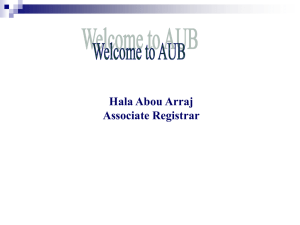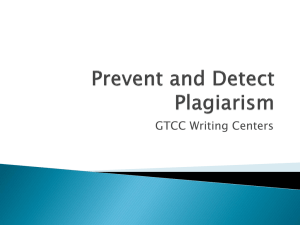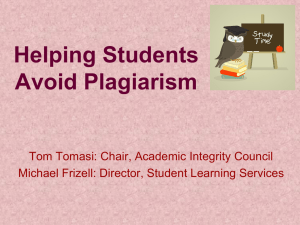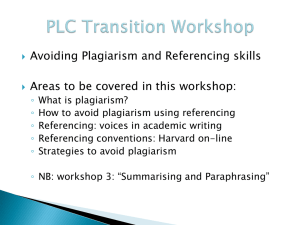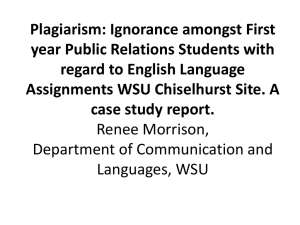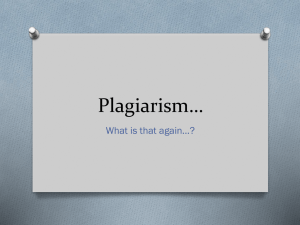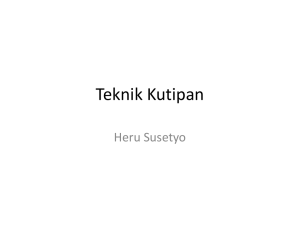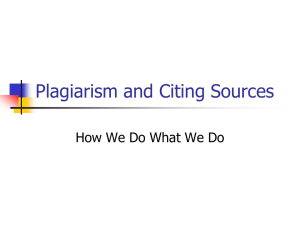Plagiarism Workshop 31/01/08 Noel Raftery
advertisement
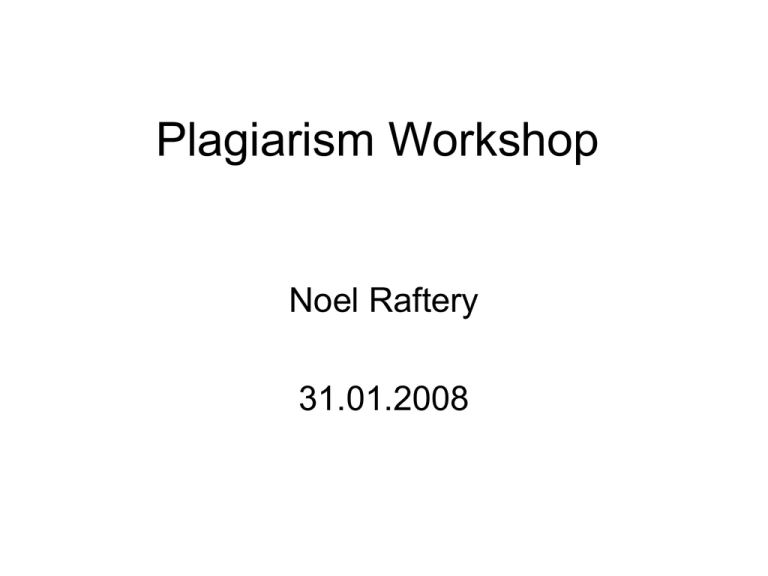
Plagiarism Workshop Noel Raftery 31.01.2008 Acknowledgement This presentation is an edited version of an online presentation by George Siemens, an Instructor at Red River College in Winnipeg, Manitoba, Canada. It is available at http://www.elearnspace.org/presentations/plagiar ism.ppt Definition • “the act of passing off as one's own the ideas or writings of another." http://www11.georgetown.edu/programs/gervase /hc/plagiarism.html It’s not just students… • Academics, research, authors • Claiming work as own, or using without appropriate acknowledgement, are forms of plagiarism, academic dishonesty, or (at minimum) ethical lapses But… • This workshop is focusing on plagiarism as an obstacle to “fair and consistent assessment of learners”, a HETAC prerequisite for programme validation (see IT Sligo QA Procedures) • It applies to learners presenting work for assessment in part or whole fulfillment of the requirements for a course Prevalence • 80% of college students have cheated • 54% of college students admit to plagiarizing from internet • 47% say instructors ignore known issues of cheating • 55% of instructors say they wouldn’t be willing to devote real time to document suspected plagiarism http://www.plagiarism.org Types and degrees Types • Accidental • Intentional Degrees • Limited • Significant Some Issues • How do we define individual contributions when society increasingly values collaborative work efforts? • Assessment at a higher level – Compile – Analyse – Synthesise – Evaluate Approaches to dealing with plagiarism 1. Reactive: Detection and disciplinary procedures 2. Proactive: Prevention by redesigning learning activities and assessment model The reactive approach (Detection and disciplinary procedures) • Detection is never as good as prevention • Time consumed by disciplinary procedures, etc • Culture of distrust • Core problem not addressed: teaching the learner to perform at a higher authentic level The proactive approach (Redesigning learning activities and assessment model) • Embed plagiarism prevention as strand through all courses and programmes • Clarify what plagiarism means for learners • Assist learners in avoiding plagiarism • Know how to recognise plagiarism Embed plagiarism prevention as strand through all courses and programmes • See plagiarism prevention as a learning tool and specify where it is to be covered in syllabus • Design assignments to minimise risk of plagiarism • If this is not practical, design assignments to minimise risk of non-detection of plagiarism by lecturer, e.g., incorporate interview Clarify what plagiarism means for learners • Provide written requirements for each assignment including marking scheme • Provide detailed written information to students on the procedures, mechanisms and regulations for continuous assessment including plagiarism Assist learners in avoiding plagiarism • Define the requirements for quotations and citation in the assignment and specify a style, e.g., the Harvard System • Incorporate simple examples of citation in the handout and refer learners to more detailed explanations (see link on last slide) • Explain paraphrasing (see link on last slide) • Explain how to keep track of sources • Ask for outline, draft, and final reports • Detail appropriate collaboration Know how to recognise plagiarism • Know your subject area and sources • Identify inconsistent writing styles in written assignments • Use Google • Use Turnitin Links • The Harvard system – see website http://www.library.uq.edu.au/training/citation/ harvard.html (University of Queensland) • How to Paraphrase - see “Plagiarism - what it is and how to recognise and avoid it”, http://www.indiana.edu/~wts/pamphlets/plagi arism.shtml (Indiana State University) • Google - http://www.google.com • Turnitin - http://www.turnitin.com
